Enterprise service management for software teams
About this guide
For this guide to be effective, we recommend reading the ITSM Solution Delivery Guide and Overview of ITSM use cases and reference architecture.
The guide provides a comprehensive overview of how to deliver and implement Atlassian tools and IT Service Management (ITSM) using a standardized delivery process through an opinionated lens, leveraging best practices. It is written for those about to set up a Jira Service Management (JSM) implementation project.
This guide aims to increase customer satisfaction by making ITSM implementations more straightforward. It will be regularly updated with new information and feedback to ensure that it stays relevant and effective.

Use case: Enterprise service management for software teams
Software teams working with and maintaining products and services.
Solution description
Before making any changes, you must understand the process you are about to implement. When you start, focus on the essential functionalities, and understand the team that will use the solution and what they care about.
Jira Service Management for software teams provides the best functions that software development teams need to stay on top of incoming issues, intake of feature requests, and bug activities while working with the tools they know.
Many software teams prefer to work with chat tools like Slack or Teams rather than email, and JSM has integrations for that purpose. This allows your organization to reach the software team directly through the chat, the portal, or email, while the software team can respond directly to the chat.

Software teams also want to improve their products and services and need user feedback. On top of having available request types in the portal, such as “feature request”, “enhancement”, or “report a bug”, It’s also helpful to use widgets or issue collectors to get that additional feedback from users who don’t usually go to Jira Service Management.
Software teams want to focus on writing code and automating change requests as much as possible. Deploying code without manually going to Jira creates a much better user experience and allows the teams to manage their time more efficiently.
This also gives your operations a complete audit trail of the changes deployed and is critical for compliance and risk handling.
Finally, software teams love to collaborate with Confluence and use it to document their Release notes, Product Requirement Documentation (PRD), Known Errors, and faqs.
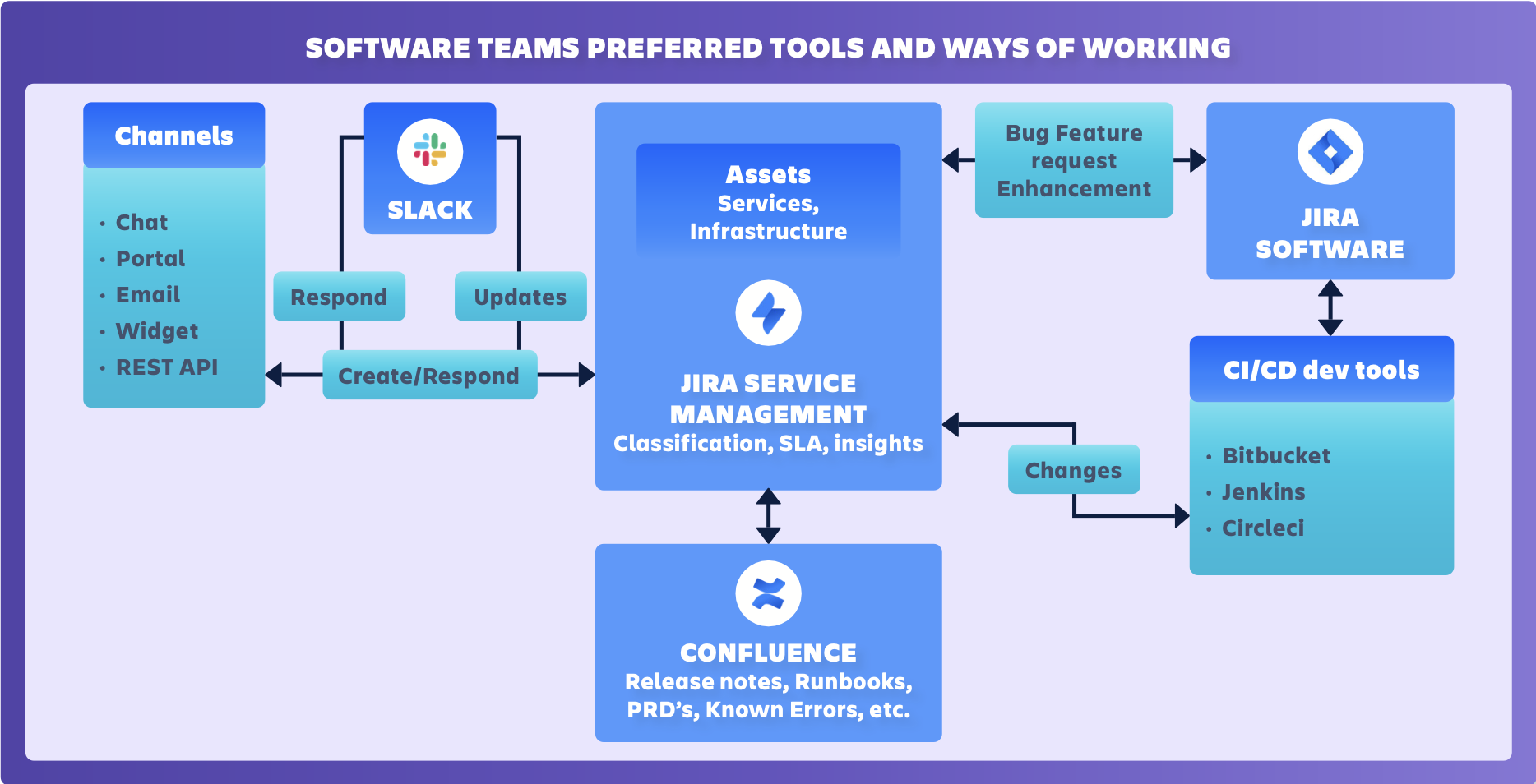
Added value
There’s always important to focus on the value that intrigues the stakeholder you are talking to. For that, you need to understand their roles and needs, whether they are incident managers, product owners, the management, or developers in a team.
1. JSM for software teams brings visibility to the whole organization, from feature requests, bugs or support tickets down to the code. Having everything in one place (single pane of glass) also helps with prioritization and planning. This is something that management and product owners value and makes it a good selling point for Partners.
2. JSM for software teams allows teams to collaborate and automate redundant tasks, which saves time and allows the teams to work on the things that matter. This is something the teams really value and makes it a good selling point for Partners.
3. JSM for the software team leads to faster Mean Time To Resolve (MTTR) by increasing visibility on what has been recently deployed in the new investigation view:
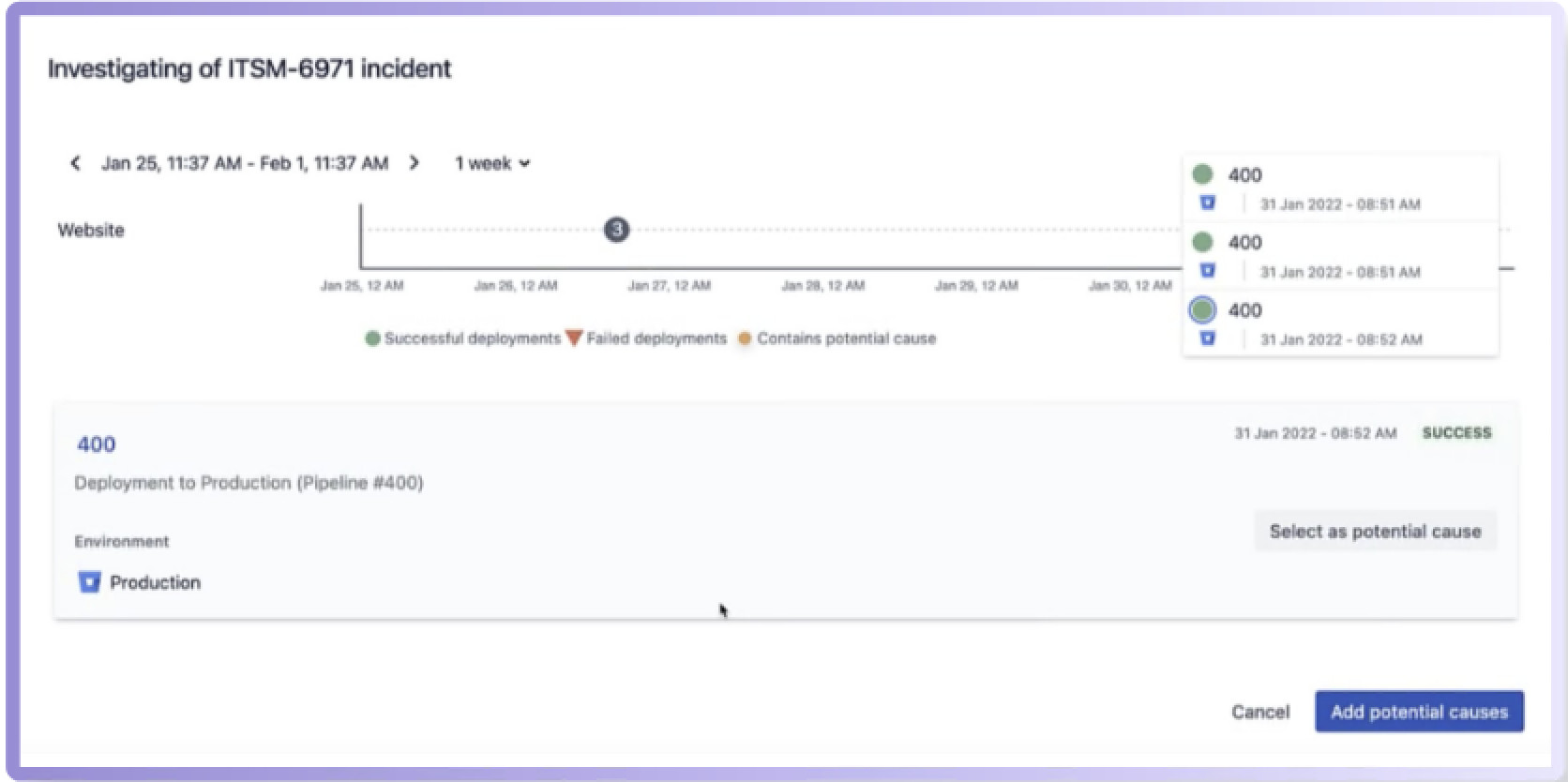
4. JSM for software teams also helps with preventive actions, when needed, by using the built-in Post Incident Review. Incident Managers love to hear this, which is a great selling point for Partners.
5. Finally, JSM comes with a reports engine that allows software teams to analyze and improve. For example, the number of bugs reported for a specific version.
Solution overview
For every use case, there are three implementation steps.
1. Knowing | discovering the existing practices that the team uses |
2. Understanding | diving deep into the existing practices and identifying areas of
improvements |
3. Creating value | improving the existing practices |
Solution workflow
In real life, software teams using both Jira Software (JSW) and JSM will be part of an organization that wants to track and plan the progress of multiple teams and projects, So they start involving products such as Jira Align and Advanced Roadmaps.
The diagram below shows how the products are used from a software team perspective.
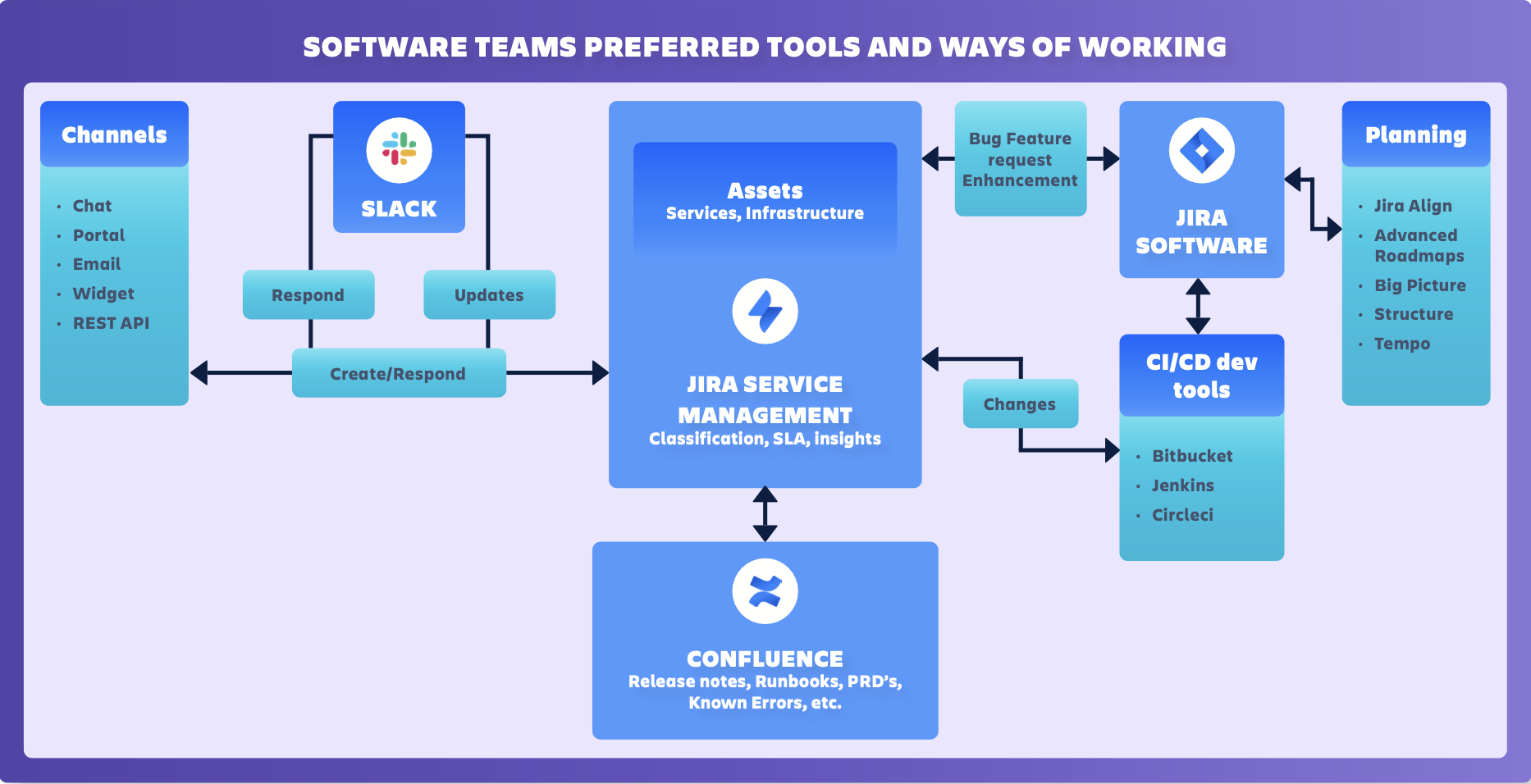
End users register tickets through their preferred channel. Software teams respond in Slack. Their responses are updated in JSM.
Bugs, enhancements, and feature requests are linked to Jira Software, and tracked in Jira Align or Advanced Roadmaps.
Developers deploy code that generates automated changes in JSM.
Release notes, runbooks, PRDs, known errors, and more — are documented in Confluence.
Admin configuration step by step
There’s always a need to focus on the value that triggers the interest of the stakeholder you are talking to. For that, you need to understand their roles and needs, whether they are incident managers, product owners, management, or developers in a team.
- Go to your newly created project and click Services to set up the right products or services the software teams support. Add the right Tier (Service Tier), Change approvers (Groups), and Repository to your service.
- Select the correct environment/s and request type
- You can also enable deployment gating if the customer needs to allow or prevent deployments at specific points in the change management process.
- Set up SLAs for your project.
- Set up Queues for your project.
- Document each process with the work routines so that the agents can fulfill the requests and follow the runbooks in Confluence.

- Configure the portal, make sure to group the request types into logical categories for your end users. Here is an example of how it can look like:
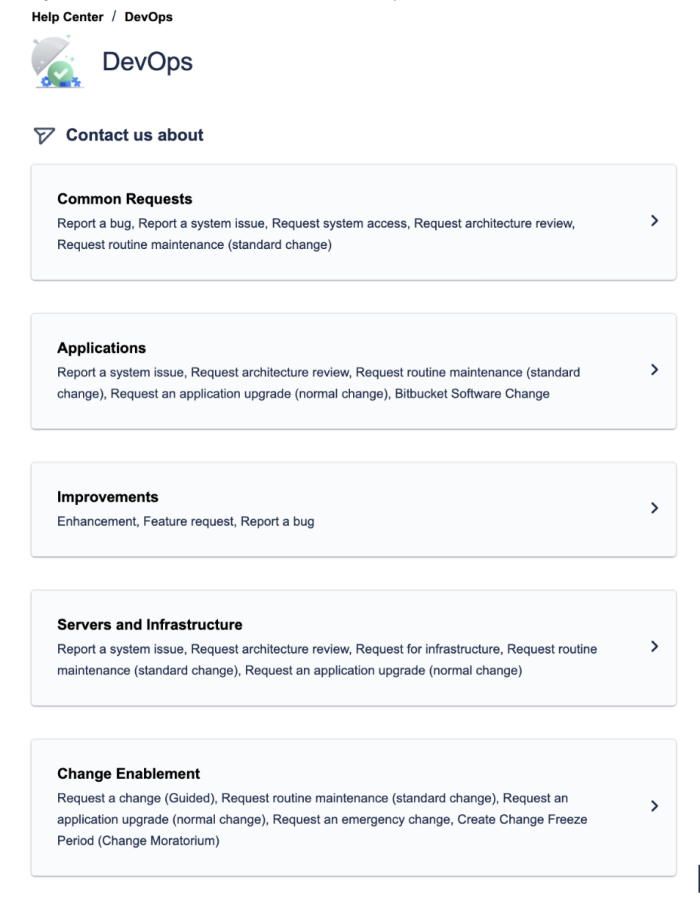
13. The template has some automations that are handy, however make sure to review them and adapt them to your needs. See below for some examples.
Automation Name | Comment |
|---|---|
When a change management request is created, update the change type and risk
| According to your company’s risk matrix, add changes to fit the need.
|
Add form or runbook to your workflow
| Make sure to add helpful forms or runbooks for the different processes. There are hundreds of templates to get started.
|
Approved Normal Change raises JSW issue
| Here’s an example of a change that creates a ticket in a JSW project after approval:  |
Major Incident resolution raises linked Post Incident Review (PIR) | An automation that checks for major incidents and creates PIRs. 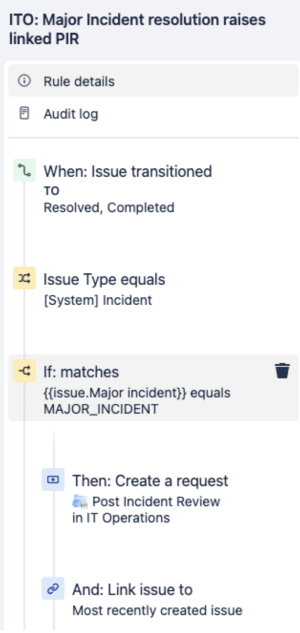 |
Inform users of fixes in new
releases | Add automation that checks for Jira Software issues that are closed and comments on any linked JSM ticket with information about the fix.  Hi {{issue.fields.reporter.displayName.split(“ “).first}},
We just wanted to let you know that we’ve just released a new version which resolves {{triggerIssue.key}} ({{triggerIssue.summary}})!Cheers,
Automation for Jira |
You are now all set with most of the needed functions. Congratulations!

Additional tips and tricks
To go beyond what is available out of the box and expand the functionality, we recommend looking at the marketplace for valuable apps. One example can be modifying the look and feel of the portal. We often use apps like Refined and Theme Extension for Jira Service Management.
Software teams can benefit from adding release notes, identifying bugs for their services and feature requests currently being considered, additional links, and an improved portal layout.
Another example of expanding beyond the out-of-the-box functionality is being able to hide specific request types that should not be visible to everyone.
Other use cases
Was this content helpful?
Connect, share, or get additional help
Atlassian Community